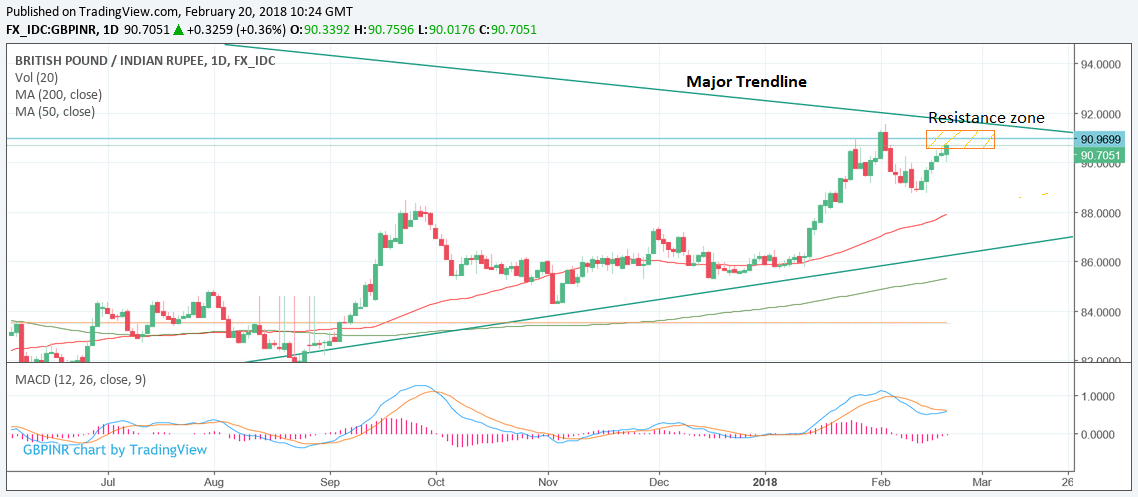Pound-to-Indian Rupee Rate Forecast: Reaching a Glass Ceiling

© DragonImages, Adobe Stock
GBP/INR has recovered and remains in an uptrend, however seasonal factors, changing fundamentals and technical resistance just limit the potential for gains.
The Pound-to-Indian Rupee exchange rate has been rising up in a an uptrend for many months now - ever since the April 2017 lows were rejected - suggesting the uptrend remains intact.
Such a trend would typically be expecgted to continue continue however we identify some additional features of the GBP/INR chart which cast doubt on such a view.
There are substantial chart levels not far above the current market rate of 90.65 which will act as obstacles to further price growth, which analysts refer to as 'resistance levels'.
The first is the April lows at 90.89, and the second the major trendline drawn from the 2015 peak which also connects with the 2016 June high.
This level is likely to see increased activity and potentially more supply as traders enter the market and sell the Pound at that level in expectation of a pull-back.
A further obstacle is a major trendline situated in the mid 91s, which is also likely to witness heavy increased selling from technical traders entering the market for the same reason as above.
Only if the exchange rate breaks decisively above the major trendline would the uptrend gain new impetus, in our opinion?

J.P. Morgan Bearish the Rupee
Analysts at J.P. Morgan are cautious on the India Rupee's prospects, based on a recent assessment of the Indian economy.
Analysts at the world's largest investment bank say they expect gains for the USD/INR exchange rate and we would expect this to translate into gains for GBP/INR given that, in seperate forecasts, they see the Pound strengthening against the Dollar (GBP/USD 1.45 in 12 months).
"We maintain a modestly higher trajectory in terms of our USD/INR forecast profile on a combination of a wider current account deficit this year, risks around fiscal slippage and underwhelming Indian export performance."
Yet they see pressures on the Indian trade surplus easing somewhat.
India is dependent on imported oil, which accounts for a third of its total imports, therefore, the recent fall in the price of oil has reduced the trade deficit which contributes the lion's share of the current account deficit.
This should contribute to supporting INR.
Further reasons for predicitng upside for the indian currency include: a seasonal bias to strengthening, the country's generous interest rates which is a draw for foreign capital and intervention to prop up the currency from the Reserve bank (RBI).
"Positive carry and the RBI’s more than adequate FX reserves should keep any periods of INR weakness bounded. As we progress towards the end of Q1 we also tend to see seasonal strength in the currency," says J P Morgan analysts Danial P Hui and Niall O'Connor.
Get up to 5% more foreign exchange by using a specialist provider to get closer to the real market rate and avoid the gaping spreads charged by your bank when providing currency. Learn more here.
